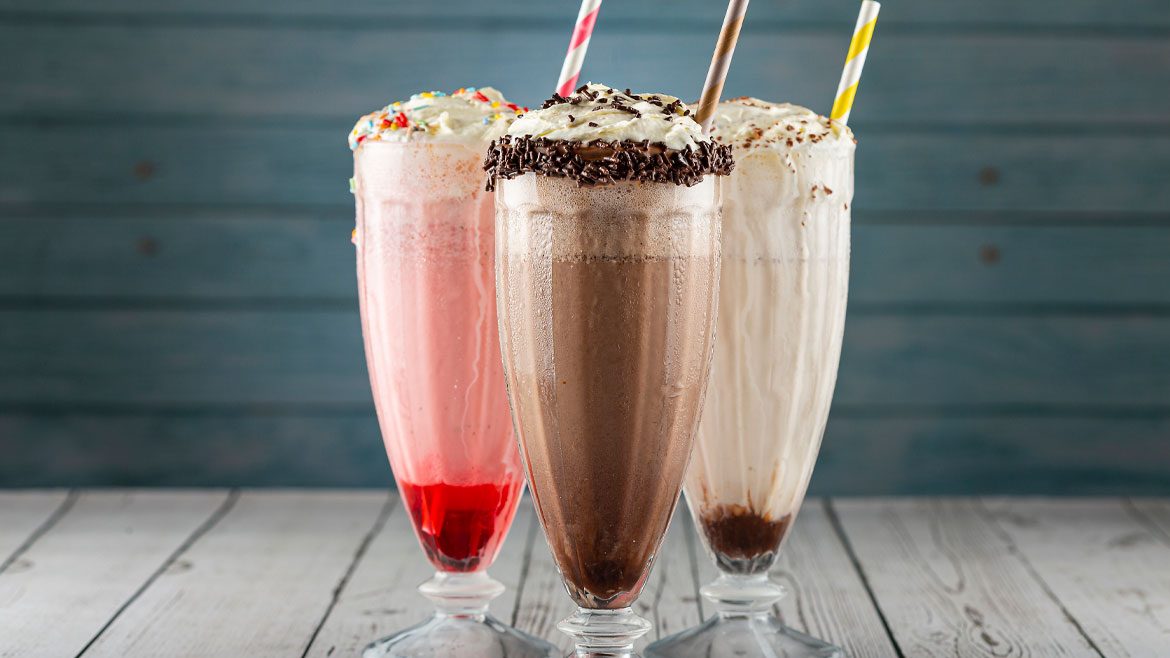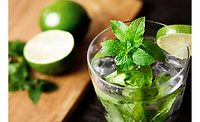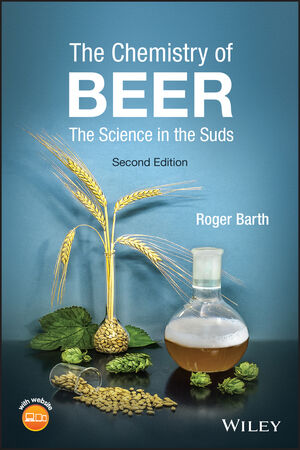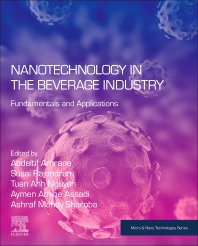![]()
Low-Carb Living Puts Protein in the spotlight
Beverage-makers capitalize on trend with soy and whey
proteins
Protein ingredients have
been around for a long time, but thanks to the Atkins, South Beach and
other low-carb diet crazes, this old stand-by is now a hot choice for
beverages.
“Consumer awareness of low-carb diets is through
the roof, and the demand for high-protein beverages has really
increased,” says Kelly Czerwonka, marketing manager for Glanbia
Nutritionals, Monroe, Wis., an international dairy ingredient company
providing nutritional and functional ingredients, including whey proteins.
“The trend is driven more by consumer demand than it is by product
manufacturers. People are looking for high-protein options, and a beverage
is a great way to get a high-protein, low-carb meal replacement.”
Soy and whey proteins are standard choices for makers
of functional powder and ready-to-drink (RTD) beverages, including meal
replacement beverages, sports nutrition and athletic performance drinks,
weight loss beverages, soymilk products, infant formula, smoothies,
drinkable yogurts and low-carb milk alternatives.
“With the low-carb trend, there has been a
heightening awareness of the role foods and beverages can play in managing
hunger, and in some instances, increasing attention on the glycemic index
of foods and beverages,” says Jean Heggie, marketing leader, North
America-food for The Solae Co., St. Louis, Mo., which offers
beverage-makers a portfolio of soy-based ingredient solutions, including
Solae soy protein. “Protein can play a significant role in products
designed to deliver satiety and to be low-glycemic index.”
Both major protein ingredients are available to
beverage manufacturers as a protein isolate, which is 90 percent soy or
whey protein; a protein concentrate (70 percent protein in soy’s
case, and 25 to 80 percent protein for whey); and wholebean powder (40
percent soy protein).
“For nutritional applications, formulators would
be looking for an isolate,” Czerwonka says. “It’s great
for things like high-protein sports beverages that bodybuilders or other
serious athletes would be interested in, especially in the form of
ready-to-mix powders.”
Protein ingredients are used for their nutritional
value and for formulation purposes, depending upon the source. Whey protein
is valued for its essential branch chain amino acids, which appeal to
athletes, as they help build muscle. Its bioactivity is another benefit;
whey protein can be processed to smaller and smaller fractions, which have
been shown to have immune-enhancing and intestinal health properties,
making it useful in the formulation of nutraceuticals.
As the only high-quality, plant-based protein, soy has
a variety of nutritional benefits. Similar to whey, it contains all the
essential amino acids that support human growth and development. Soy is
also thought to help prevent certain types of cancer, improve bone health,
ease certain menopausal symptoms and assist in weight management.
“Soy protein also has a very healthfull
perception among consumers — more than 74 percent of consumers
perceive soy as healthy,” Heggie says. That perception has driven
development of soy-based beverages in recent years; refrigerated soymilk
grew 18.6 percent in sales in mainstream supermarkets in 2003, and soy
protein is being used more extensively in juice-based beverages, such as V8
Splash Smoothies.
Soy holds an important advantage over whey: an
FDA-approved health claim, which states that consuming 25 grams of soy
protein a day, with a diet low in saturated fat and cholesterol, may reduce
the risk of heart disease. Thus, adding a soy ingredient can help
beverage-makers to more effectively market finished products to
health-conscious consumers.
“Soy protein ingredients are incorporated in
beverage systems for a variety of reasons,” says Lisa Scott, beverage
technologist for Archer Daniels Midland Co., Decatur, Ill., a provider of
functional soy protein isolates and concentrates and organic wholebean
powder. “From a nutritional standpoint, soy protein is an excellent
source of amino acids, a good source of dietary isoflavones, and is
cholesterol- and dairy-free.”
While there is not currently a health claim for whey
protein, the ingredient is getting more attention these days. Recent
research, highlighted by the “3-A-Day of Dairy” and
“24/24 Milk Your Diet. Lose Weight!” advertising campaigns,
shows that dairy products, and by extension, whey proteins, help with
weight management. Additionally, whey proteins contain naturally occurring
calcium, which helps maintain bone health and prevent osteoporosis.
“People are becoming aware that whey protein not
only provides the benefits of high-quality protein and calcium, but that it
also has bioactive components that are capable of improving health and
preventing disease,” says Marcela Cota Rivas, technical and
nutritional development manager for Vitalus Nutrition Inc., Bellingham,
Wash. “These components have been linked to raising natural
antioxidants in your body, like glutathione, due to their high
concentration of cysteine, which serves as a substrate for glutathione
synthesis.”
Formulation considerations
As with any ingredient, beverage-makers must choose a
protein based on the impact it will have on the finished product,
particularly how it will react with other ingredients and how it affects
color, flavor and shelf life. Understanding the profile, processing
conditions and product composition helps ingredient providers to work most
effectively with beverage manufacturers to choose the right option.
“You have to know what product you want, what
you want it to look and taste like, and what market it is for,” Cota
Rivas says. “It also depends on whether you’re talking about a
powder or a liquid RTD beverage, because there are different considerations
for each.”
Generally, protein concentrates are used in thicker
beverages, whereas isolates produce a thinner-bodied drink to which a
thickening agent is sometimes added. Powdered beverages tend to be easier
to formulate and develop because they have a longer shelf life than liquids
and can be flavored more easily. RTD beverages fall into two categories:
neutral pH beverages, which are cloudy and milk-like, and acidic pH drinks,
which are juice-like and typically clear.
“The addition of soy protein to a neutral
beverage that is normally flavored and colored, such as strawberry or
coffee, has very little impact on color,” Solae’s Heggie says.
“When adding it to a fruit-based product, it will make the
beverage generally cloudier in appearance. Depending on the level of
incorporation and type of beverage you are working with, protein-containing
beverages also are generally more viscous. However, significant impacts on
viscosity are rarely seen at relatively low inclusion levels.”
Processing also has an impact on what type of protein
beverage-makers choose. Beverages undergoing high heat treatments like UHT
require a heat-stable protein that would remain in solution—a
criterion not all proteins can meet. Soy, for example, can’t be used
in clear beverages because it forms colloidal dispersions in water;
however, it does enhance viscosity, making it attractive for use in
milkshake or foamy-type beverages, drinkable yogurts and smoothies.
“When you’re developing a neutral pH
beverage, you have a choice between whey proteins or milk protein
concentrates,” Vitalus’ Cota Rivas says. “That’s
because at a neutral pH, clarity in solution is not so important since
these types of drinks are usually cloudy or opaque. However, you do have to
consider the heat treatment, which will depend on the desired shelf life. A
refrigerated drink will not need a heat treatment as extensive as an
ambient temperature shelf-stable drink.”
Whey protein’s solubility makes it particularly
useful for RTD beverages. Often when beverage-makers attempt to boost a
beverage’s protein content, a phenomenon called protein flocculation
can occur, or the added protein falls out of solution, causing the
ingredient to settle on the bottom or float around the beverage. Because
this is unappealing to consumers, whey proteins are often used because
their high solubility negates this issue.
One of the biggest problems formulators face in
incorporating whey into a clear drink is its tendency to increase in
viscosity when heat-treated. Vitalus is focused on this area, having
developed a heat-stable whey protein isolate called Inpro 90 HS
specifically for clear RTD beverages undergoing UHT, retort or hot-fill
processes.
“The main problem formulators face in developing
RTD beverages is the destabilization of the protein during storage, which
causes gelling and cloudiness. One way to overcome this has been to lower
the pH in the whey protein solution; however, shelf life is compromised
because you’re forcing the protein to remain soluble at a certain pH
without properly stabilizing it,” Cota Rivas says. In such cases,
formulators are successful in getting a clear drink at the beginning, but
the protein precipitates as shelf life progresses, causing cloudiness as
the pH rises because the protein is unstable.
Color, clarity and flavor issues factor into beverage
makers’ protein choices. For example, a clear sports beverage
can’t have a cloudy appearance, so the manufacturer must select a
type and level of protein that doesn’t interfere with the finished
beverage.
“Whey is a very clean protein as far as flavor
goes,” Glanbia’s Czerwonka says. “It has a light dairy
flavor, so it doesn’t negatively affect the flavor of the finished
beverage. It’s easily masked by light flavors like vanilla or
strawberry, even when you bump up the protein content.”
As for soy protein, it displays dispersion
characteristics, solubility, emulsifying capacity and builds viscosity when
added to a beverage.Soy is typically less costly than its whey and
casein protein counterparts.
“Flavor and stability are key issues. Soy
protein off-flavors are characterized as beany, bitter and
astringent,” ADM’s Scott says. “Soy protein also has the
ability to bind various flavor compounds, in particular, vanillin.
Off-flavors can be overcome by proper soy protein isolate/concentrate
selection, use of a soy masking agent/flavor, and incorporation of flavors
that are efficient at masking soy.”
“Many of the flavors that are popular in
beverages like chocolate, coffee and fruit flavors, in general, work quite
well in soy-based beverages,” Heggie says. “Even vanilla, which
was once considered a very challenging flavor for soy-based beverages, has
come a long way in the past few years. We are continually addressing the
taste issue with new and improved technologies and by working with flavor
companies and others to develop improved flavor systems specific to
soy-based beverages.”
In terms of stability, soy can be used in beverages
that undergo processes including homogenization, HTST and UHT, although the
protein must first be hydrated in 120-degree water for at least 15 minutes.
“Stabilizer selection is also key to achieving
stability in soy protein beverages,” says Scott. “Neutral-base
ready-to-drink beverages require carrageenan and cellulose gel whereas
acidic ready-to-drink beverages require pectin. Locust bean gum,
carrageeenan and xanthan gum can be used in powdered soy beverage
applications.”
Protein in the marketplace
While nobody is sure how long the low-carb lifestyle
will remain popular, it appears that, for now, whey and soy proteins will
continue to appear in myriad new products.
In response to the Atkins/South Beach diet trend,
Chelsea, Mass.-based HP Hood Inc. introduced its Carb Countdown low-carb
milk substitute nationwide, and quickly expanded the line to include
low-carb yogurt, RTD smoothies and juices. Such products have increased the
use of whey proteins to provide a high-protein/low-carb combination because
they are low in lactose, which adds to the carb count in regular dairy
products.
“Drinkable yogurts and smoothie-type drinks are
a growing category,” Czerwonka says. “There are so many on the
market and new ones keep popping up. Kids like them, too, and many parents
view them as healthy alternatives to soda. Looking at the refrigerated
case, there were just a handful of drinkable yogurts a few years ago, and
now there are dozens.”
Capitalizing on the soy trend, The Solae Co. recently
launched a national television ad campaign to build awareness for its Solae
brand. Titled “Protein in Unexpected Places,” the campaign aims
to inform consumers that Solae is present in many beverages and foods, and
encourages them to seek out products containing the branded protein as part
of a more healthful lifestyle.
“The timing is perfect for the brand—Solae
soy protein is now in a number of great-tasting, everyday foods and
beverages that consumers can find on any grocery store shelf across the
country,” Heggie says. “We also wanted to demonstrate to our
customers that we don’t just produce the best ingredients for their
foods and beverages, but we’re also an excellent marketing partner.
In our ads, you’ll see products from customers such as
Campbell’s, Snapple, 8th Continent and Gardenburger.”
No matter what the low-carb diet plan, it appears that the number
of ways to get a protein fix through beverages is going to keep growing.






